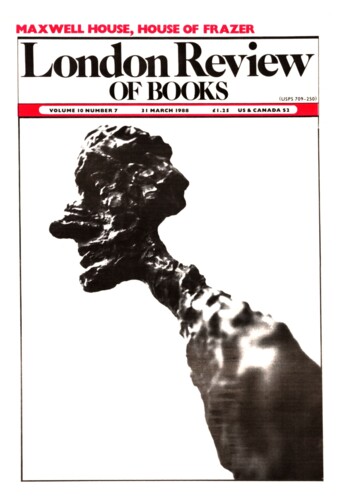Upward Mobility
Bruce Boucher, 31 March 1988
There are serious works that masquerade as coffee-table books, and Venetian Villas by Michelangelo Muraro is one of them. Large and elegantly packaged, it contains over four hundred colour plates on a topic of perennial fascination, the villa in the Veneto: but it would be wrong to dismiss it as just another recycling of familiar images. The author is a distinguished art historian who grew up among the buildings he describes and has made them a principal object of study in the intervals of a career as teacher and superintendent of historic monuments in Venice. With Muraro’s words and Paolo Marton’s images, Venetian Villas captures better than any other book I know the full sense of life in the Veneto villa. The title itself plays on Venetia as the old name for Venice and for the Roman province which, over the course of centuries, became the city’s hinterland. For Muraro, the identification of the island-city and its land-based empire is crucial to an understanding of the architecture of both. As he describes it, Venice is ‘an amphibian city … enriched by her double connotation, her maritime and land identities’.

